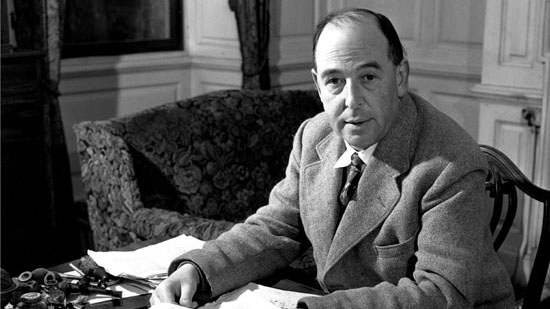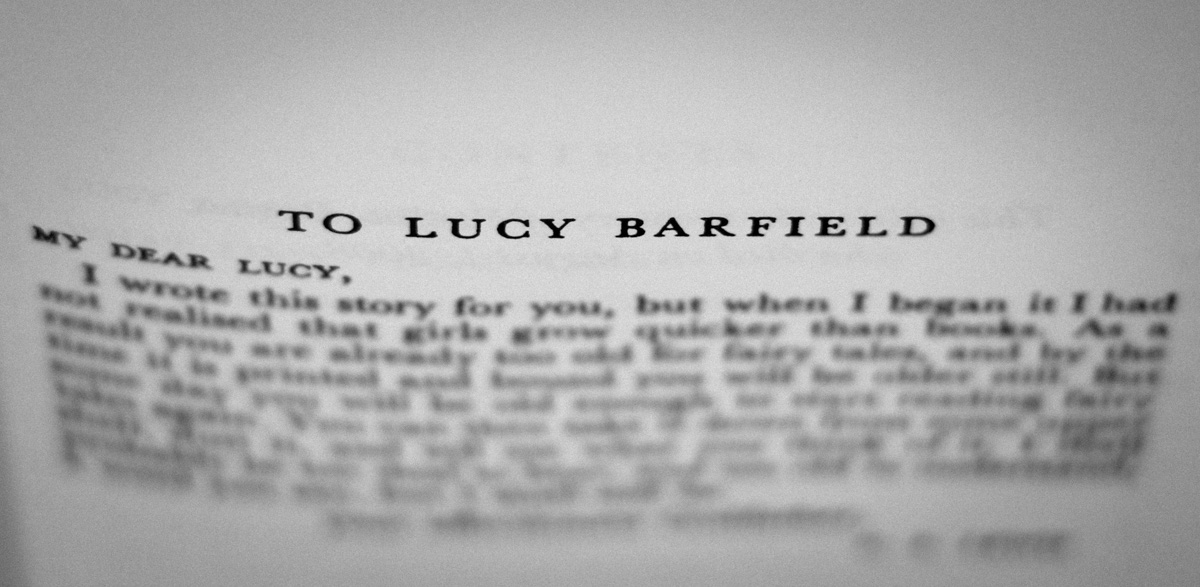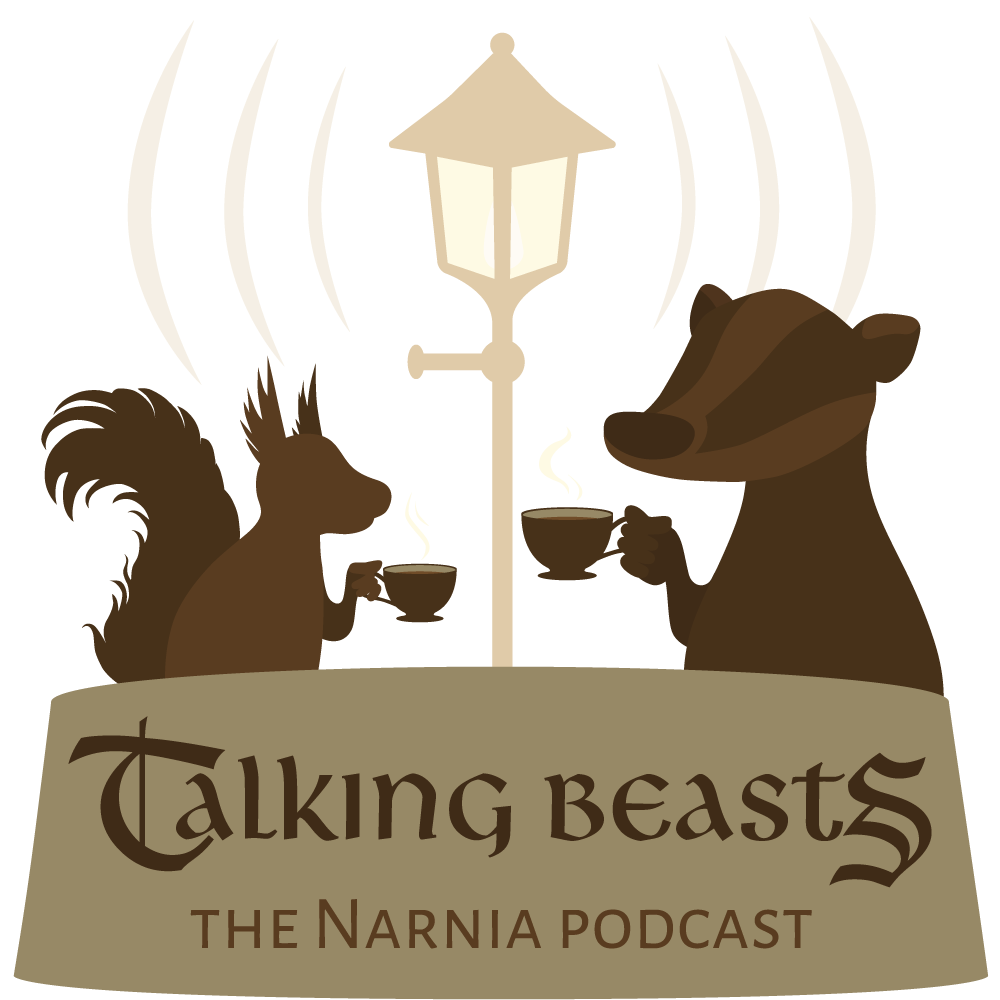
C. S. Lewis, Creator of Narnia
Clive Staples Lewis (1898-1963), known to his friends as “Jack,” published the seven Chronicles of Narnia books between 1950 and 1956.
He served as tutor in English Language and Literature at Oxford University for 29 years and wrote over 30 books. Other famous works include The Space Trilogy, The Screwtape Letters, Mere Christianity, and The Problem of Pain.
View a timeline of Lewis’s life.
Inspiration for Narnia
The image of a faun carrying an umbrella and parcels in a snowy wood came to C. S. Lewis when he was sixteen years old. Decades later, it became the creative starting point for The Lion, the Witch and the Wardrobe.
The story did not have any clear direction until the invention of Aslan. Lewis had been having dreams about lions at the time. [1]
Christian Influence in The Chronicles
There was nothing Christian about the initial inspiration for Narnia, Lewis wrote. [2] He maintained that Aslan the Lion is not allegory at all, explaining that the character is an invention that explores the question of what Christ might be like in other worlds if they actually do exist. [3]
Lewis was an atheist before converting to Christianity at the age of thirty-two. All his life, he was haunted by an “inconsolable longing” he called joy [4]. Later, he famously reasoned that if he had a desire that nothing on Earth could satisfy, that indicated he was made for another world. [5]
Not for Children Only
The Chronicles of Narnia were not written exclusively for children. Lewis wrote that there was no point in reading a book as a child if it was not worth reading as an adult. [2]
“I was therefore writing ‘for children’ only in the sense that I excluded what I thought they would not like or understand; not in the sense of writing what I intended to be below adult attention.” [2]
The notion that fantasy stories mislead children about the nature of the real world was rejected by Lewis. He believed that stories that seemed realistic on the surface were more likely create false expectations about the real world. [6]
Book Dedications

- The Lion the Witch and the Wardrobe
To Lucy Barfield: The daughter of Owen Barfield, a member of the Inklings (an informal literary group that included C. S. Lewis, J. R. R. Tolkien and Charles Williams). - Prince Caspian: The Return to Narnia
To Mary Clare Havard: The daughter of Lewis’s physician, Dr. Robert Emlyn Havard, another member of the Inklings. - The Voyage of the Dawn Treader
To Jeffrey Barfield: The adopted son of Owen and Maud Barfield. Jeffrey was sent to the Barfields during World War II because of the air raids. - The Silver Chair
To Nicholas Hardie: The son of Colin Hardie, an Inklings member. - The Horse and His Boy
To David and Douglas Gresham: The sons of Joy Davidman, who Lewis eventually married. Douglas would go on to have a key role at the C.S. Lewis Company and co-produce the movie adaptations. - The Magician’s Nephew
To the Kilmers: A large family that often wrote to Lewis about the Narnia books. - The Last Battle did not include a dedication.
More information about the dedications
Other Fiction by Lewis
- The Pilgrim’s Regress (1933)
- Out of the Silent Planet (1938)
- Perelandra (1943)
- That Hideous Strength (1945)
- The Screwtape Letters (1942)
- The Great Divorce (1945)
- Till We Have Faces (1956)
Popular Non-Fiction by Lewis
- The Problem of Pain (1940)
- The Abolition of Man (1936)
- Miracles (1947)
- Mere Christianity (1952)
- Surprised by Joy (1955)
- The Four Loves (1960)
- A Grief Observed (1961)
- On Stories (essays)
- Of Other Worlds (essays)
Biographies
- Surprised by Joy: The Shape of My Early Life
C.S. Lewis - C.S. Lewis: A Biography
Roger Lancelyn Green and Walter Hooper - Jack’s Life
Douglas Gresham - The Narnian
Alan Jacobs
Adaptations
- Shadowlands (1993)
- The Most Reluctant Convert (2017)
- Starring Max McLean as C.S. Lewis
- Trailer | Review | DVD/Stream
References:
1. It All Began With a Picture, 1960.
2. Sometimes Fairy Stories May Say Best What’s to Be Said, 1956.
3. Letter to Mrs. Hook, 12/29/58.
4. Surprised by Joy, 1955.
5. Mere Christianity, 1952.
6. On Three Ways of Writing for Children, 1952.






